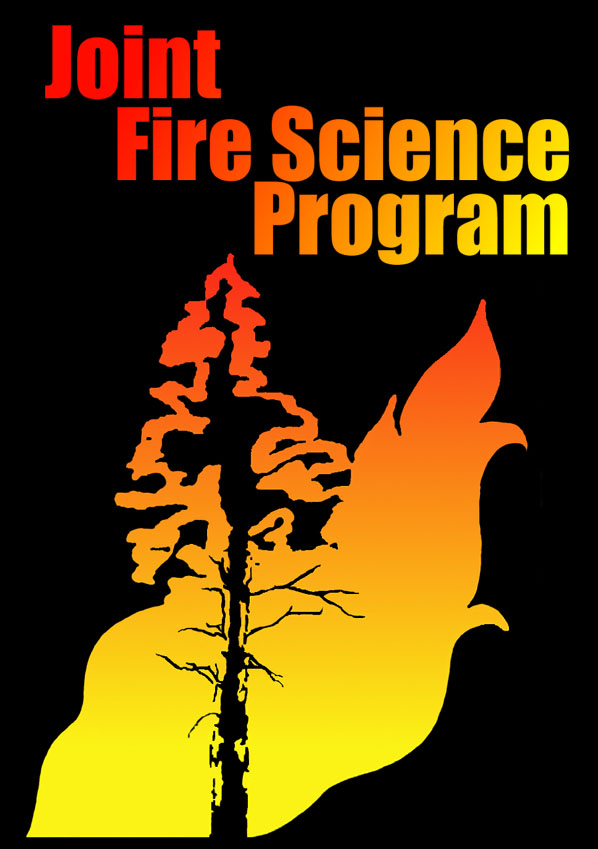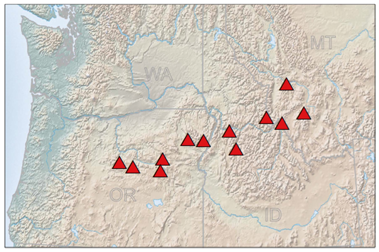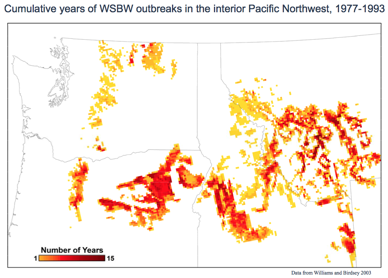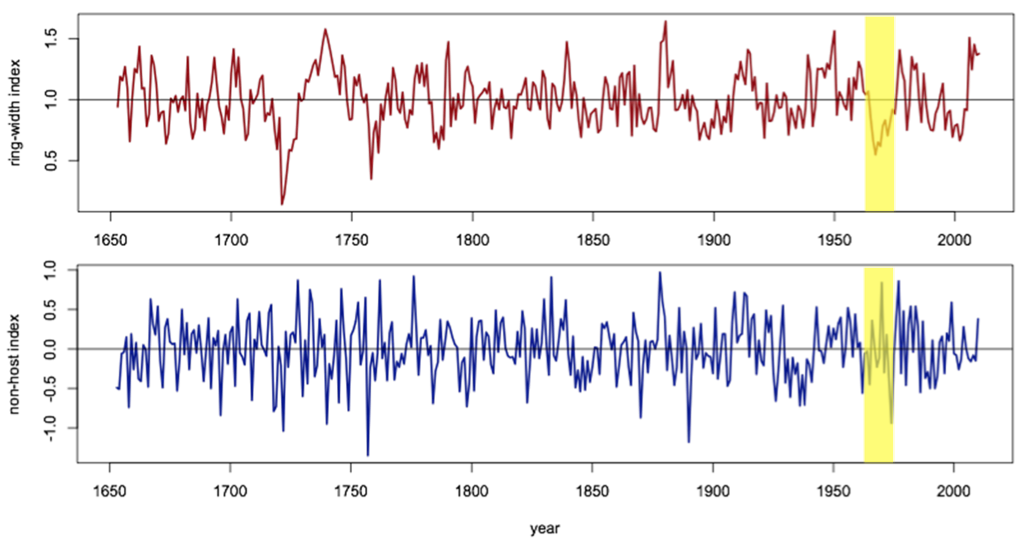

| Daniel Gavin1, Aquila Flower1, Emily Heyerdahl2, Greg Cohn2, and Russ Parsons2 1 Department of Geography, University of Oregon 2 Rocky Mountain Research Station, Fire Science Laboratory, Missoula Project duration: 2009-2013. *** Final Report, May 2013 *** Papers from this project:
|
 |
We studied the effect of interactions of fire, defoliator insect outbreaks, and climate on fuel and fire behavior using simulation modeling fit to historical climate and disturbance histories developed from tree-ring reconstructions at 12 sites in mixed-conifer forests across a climate gradient from northeastern Oregon to western Montana.
We focused on the western spruce budworm outbreak history in mixed conifer forests from central Oregon to western Montana. Tree-ring records are used to reconstruct the timing and intensity of past insect outbreaks by comparing growth of host and non-host trees. From the same stands, we collected fire scars from stumps and living trees. At each site, fuel plots and stand age structures were also obtained.
 12 sites have been collected across mixed conifer forests |
 Extend of western spruce budworm defoliation in the late 1980s |
 Tree-ring chronologies from host species (Douglas-fir) and non-host species (ponderosa pine) showing distinct growth declines of the host species. |
|
Major questions addressed:
- What relationships exist between climatic variability, wildfires, and western spruce budworm outbreaks in the mixed conifer forests of the interior Pacific Northwest? How do these associations vary across time, geographic space, and climatic space?
- At what spatial scales is synchroneity apparent within and between disturbance types? How does climatic variability govern synchroneity of disturbances?
- What is the nature and relative strength of the effects of western spruce budworm outbreaks, wildfires, and climatic variability on tree seedling establishment?
- How have disturbance regimes and forest composition changed following Euro-American settlement of the region and the implementation of fire suppression policies?

To address these questions, intensive sampling was conducted at each study site.